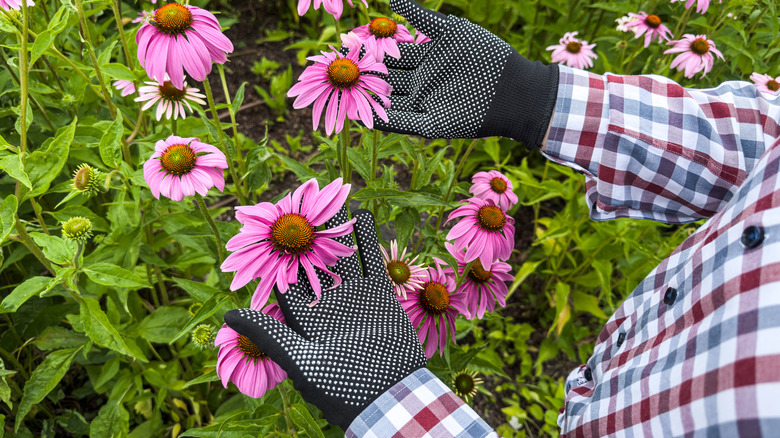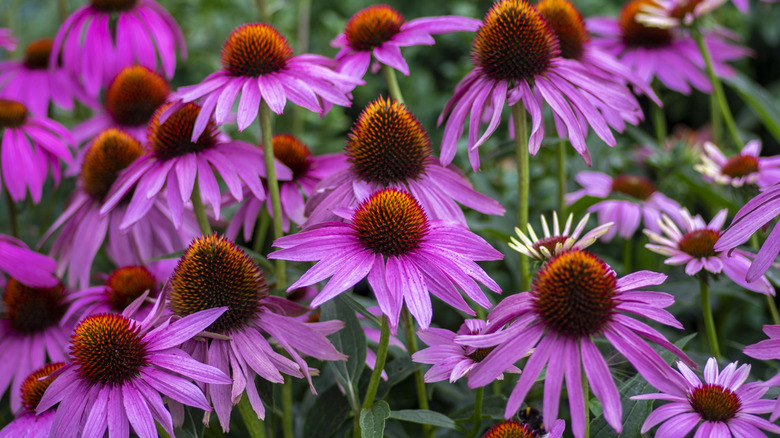How To Winterize Coneflowers For Bigger, More Controlled Blooms In The Spring
Coneflower (Echinacea spp.) is a stunning plant that'll have birds and butterflies flocking to your yard. This perennial is winter hardy in USDA zones 3a, 3b, 4a, 4b, 5a, 5b, 6a, 6b, 7a, 7b, 8a, and 8b but will need some special attention in the colder months so that it can thrive come springtime.
If you haven't already, you can divide your coneflowers before winter sets in, and the ground is pliable enough to allow for re-planting. As the plants begin to lose foliage and go dormant, consider cutting the flowers back to about 6 inches. While it's not critical to do so — some gardeners prefer to leave plants as is so birds can feed from the seed heads –you have to remove any dead or diseased foliage.
To prepare for the colder temperatures, you will want to provide a layer of mulch to help insulate the roots of your coneflowers. If you live in a more frigid region, you will need a thicker layer of mulch. A good guideline is 6 to 8 inches for very cold climates and 2 to 3 inches for a more temperate one. To avoid sending your coneflowers into premature dormancy, mulch after the ground has begun to freeze. Do not pack it down. Keep it loose as air circulation will help with insulation.
Watch winter watering with conflowers
The coneflower has a specific winterization procedure to follow when it comes to moisture and watering. Typically, perennials benefit from infrequent (monthly is good) winter watering sessions in the absence of snow cover, but coneflowers should be monitored closely for two reasons. The first is that they need well-drained soil. If you're uncertain about its drainage capabilities, add a little gravel to your soil when growing coneflowers. The other reason to keep a close eye on your coneflowers over the winter is their susceptibility to the disease botrytis, which can survive the colder temperatures and will release spores when the plant is wet. Therefore, if you need to water in the winter, do so in a way that keeps the droplets off leaves and stems.
Another way to help your coneflowers survive the winter and thrive in the spring is to add organic material, like compost. You can do this in the fall so it will slowly release nutrients throughout the winter for healthy growth. The compost also helps with any drainage issues and will keep those colorful coneflowers that attract pollinators and birds coming back next season.

